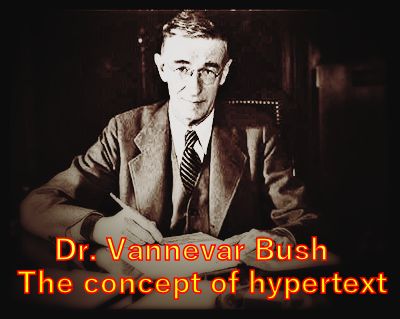 Almost universally you will find references that state that Tim Berners-Lee invented the World Wide. According to the World Wide Web Foundation, "Tim Berners-Lee invented the World Wide Web in 1989." But is it that simple?
Almost universally you will find references that state that Tim Berners-Lee invented the World Wide. According to the World Wide Web Foundation, "Tim Berners-Lee invented the World Wide Web in 1989." But is it that simple?
Like any use of the word invention, it is rarely a simple process of one person creating something new entirely from scratch. Let's define the world wide web and its components.
What is the World Wide Web?
Many people use the term internet interchangeably with "the web" or "world wide web." The internet is the information super highway, the infrastructure on which we travel. Web browsers and web servers make up the world wide web, the vehicle we use to travel on the highway.
The internet uses the TCP/IP family of protocols developed by Bob Kahn and Vinton Cerf in the 1970s. The World Wide Web is a system of Internet servers using the HTTP protocol (HyperText Transfer Protocol), an additional member of the TCP/IP family of protocols, expanding on the basic principles established by Bob Kahn and Vinton Cerf back in the 1970s.
The World Wide Web lives on a series of Web Servers that support specially formatted documents in a markup language called HTML (HyperText Markup Language). The applications called web browsers that make it easy to access the World Wide Web using URLs (Uniform Resource Locators).
Tim Berners-Lee developed the three main technologies that all computers could use for accessing information over the medium of the Internet: HTML, HTTP and URLs.
 The evolution of HyperText Markup Language
The evolution of HyperText Markup Language
Many people point to a 1945 Atlantic Monthly article called "As We May Think" by Dr. Vannevar Bush as the earliest published vision of the concept of hypertext. Concerned with information overload and the need to make knowledge more accessible, Dr. Vannevar Bush describes a theoretical machine called a "memex" that would be able to make links between documents. The machine was to extend the powers of human memory and association. Just as the human mind forms memories through associations, the user of the memex would be able to make links between documents. Discussing the concept of "making more accessible our bewildering store of knowledge" the article by Vannevar Bush defined many concepts of modern information technology.
Hypertext is defined as a system that allows objects of various types such as text, pictures, and music, to be creatively linked to each other. Ted Nelson, who coined the term "hypertext" in the 1960's, acknowledges his debt to Dr. Vannevar Bush for the concept of hypertext. Ted Nelson conceived a world-wide network that would allow information to be stored not as separate files, but as connected literature. The project known as Xanadu has never been totally completed.
On December 9, 1968, in what has been called "The Mother of All Demos" Douglas C. Engelbart and a group of 17 researchers demonstrated hypertext, object addressing and dynamic file linking during a demonstration of the oN-Line System, also known as NLS, a computer-sharing system, they had been working on since 1962. The public presentation involving two people at different sites communicating over a network with audio and video interface was a session of the Fall Joint Computer Conference held at the Convention Center in San Francisco.
The second part of the acronym HTML refers to the concept of Markup Languages which date back to Generalized Markup Language developed by IBM in the 1960s. Charles F. Goldfarb was a member of a team tasked by IBM to apply computers to the legal practice. The project required integrating a text editing application with an information retrieval system came up with the concept of Generalized Markup Language (GML).
Tim Berners-Lee defines the world wide web
In 1980, while an independent contractor at CERN (European Organization for Nuclear Research), Tim Berners-Lee proposed a project based on the concept of hypertext, to facilitate sharing and updating information among researchers. Tim Berners-Lee left CERN in 1980, and returned in 1984. By 1989, CERN was the largest Internet node in Europe, and Berners-Lee saw an opportunity to join hypertext with the Internet.'
Berners-Lee wrote the first, text only, browser client called 'World Wide Web' and made it available within CERN. It was published on the Internet in the summer of 1991. Berners-Lee spent the next few years refining the main technologies necessary for easy web browsing, URLs, HTTP, and HTML.
You will see the origin of the World Wide Web having numerous dates between 1989 and 1993. According to his biography on the W3C website, "Tim Berners-Lee invented the World Wide Web in 1989."
Tim Berners-Lee would develop HTML (HyperText Markup Language) as the computer language that would take the collection of wires and computers of the internet, and give them a more universal method of communications that would be known as the World Wide Web. Just as the core networking protocols of the internet represented a radical departure from how things were done prior to their development, the concept of hypertext was likewise a new way of delivering information.
Tim Berners-Lee is currently the director of the World Wide Web Consortium (WC3) a vendor-neutral group of international members of Internet developers setting standards for the web including standards for HTML. He is also the founder of the World Wide Web Foundation
